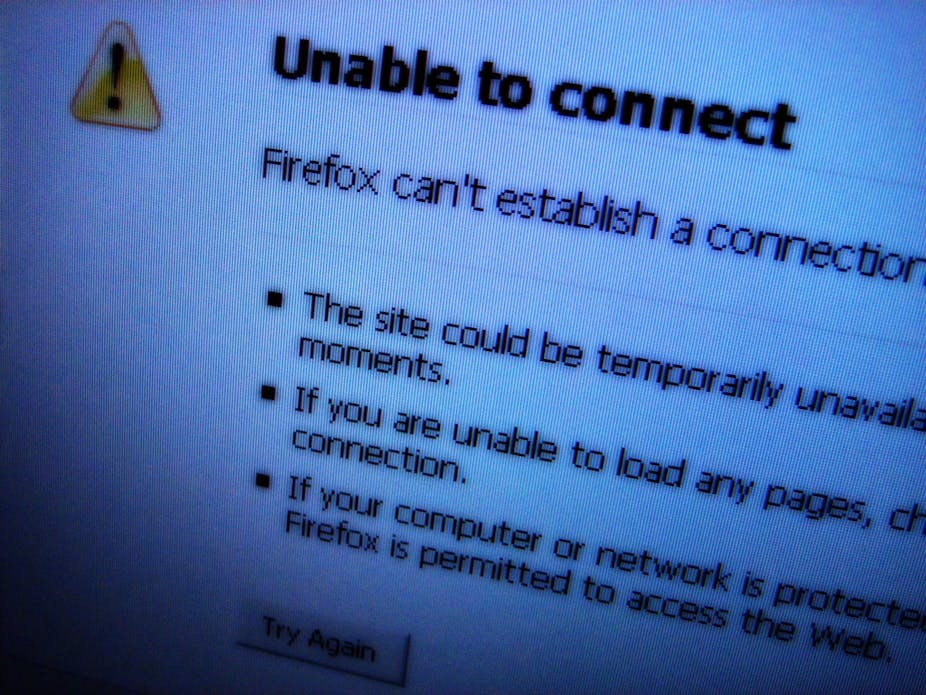A recent piece in The Conversation suggested that for “top broadband policy” the Australian government should look to Canada. Many observers of the development of Canada’s broadband infrastructure would disagree.
As Robert Imre and Stephen Owen argued in encouraging Australian policy makers to adopt “Canada’s broadband project,” there are indeed similarities between the two countries. But it’s not at all clear that Canada offers a vision for developing high quality broadband infrastructure that could advance the provision of broadband in Australia.
Urban Canadians were early adopters of broadband services. The widespread availability of cable television networks allowed development of hybrid fibre coax (HFC) cable broadband as competition to the ADSL (asymmetrical digital subscriber line) offerings from telephone companies (copper network operators).
The intensity of competition among broadband providers in Canadian cities depends on which telephone company is competing with which cable company, and on the extent of third party competition in the area. Third party competitors offer services using the existing copper or HFC networks, but have much lower market share in Canada than similar competitors do in Australia.
Competition is fiercer in some provinces than others (for instance, phone company Bell and its subsidiary Bell Aliant’s broadband pricing and service offerings are different in the province of Québec, where the primary cable competitor is Vidéotron, than in Ontario or in New Brunswick, where major competitors are Rogers and Eastlink respectively). Nevertheless, Canadians in urban centres do have a choice of broadband providers.
Over 80% of Canadian households have access to speeds greater than 25 Mbps, as compared to less than 30% in Australia. But many Canadian customers still have plans with restrictive download caps, and a 2014 study comparing Canada’s broadband prices with other countries shows Canadian prices are higher than in Australia, the UK, France, Germany or Italy.
As reported by Akamai, Canada’s average broadband connection speed is higher than Australia’s but speeds in both countries are below those in the US and many European and Asian countries. It seems that Canadian legal scholar Michael Geist’s 2009 description of the Canadian broadband market as “not awful” remains accurate today, calling into question the conclusion that learning from Canada might improve broadband connectivity in Australia.
A market-driven policy
Canadian telecommunications policy relies upon market forces “to the maximum extent feasible”. The market has provided copper and HFC-based broadband to urban Canadians but the percentage of “next generation” fibre connections in use in Canada is extremely low. With fewer than 4% of Canadian broadband subscribers connected to fibre networks at the end of 2013, Canada ranks 22nd among OECD countries. This is ahead of Australia’s 24th place ranking. Both countries are well below the OECD average of ~17%, and orders of magnitude behind Japan (~70%), Korea (~65%) and Sweden (~38%).
Australia and Canada face similar challenges in encouraging the market to provide affordable next generation broadband services to all urban and non-urban areas. NBN Co’s 2009 mandate was to build a wholesale fibre network offering download speeds of up to 100 Mbps to 90% of premises in the country, and to offer satellite or fixed wireless speeds of at least 12 Mbps to the rest. The vision was to fundamentally change the nature of competition in Australia’s broadband market, by building a near-ubiquitous, uniform, upgradeable, future proof fibre network that would be open to all providers. The Canadian government’s 2009 action was to fund 50% of the costs of extending broadband coverage at speeds of at least 1.5 Mbps to several hundred thousand households in rural and remote Canada.
A changed vision
In the midst of several reviews of the previous government’s NBN model, Communications Minister Malcolm Turnbull ordered changes to the technical design of the network in an attempt to speed the network rollout. As communicated to NBN Co in April 2014 (and supported by the just-released cost-benefit analysis), the government’s new broadband policy objective is to ensure the completion of a national wholesale broadband network that will provide speeds of at least 25 Mbps to all premises affordably, and as soon as possible.
The Canadian government’s April 2014 policy objective is to ensure that by 2017, 98% of Canadian households have access to broadband speeds of at least 5 Mbps. It will provide some funds to extend 5 Mbps broadband availability in rural and remote Canada. Current Canadian policy relies upon competition to improve affordability, to drive a transition from copper and HFC broadband networks to next generation fibre connectivity (this is happening in some areas) and to ensure ubiquitous and uniform broadband connectivity to all.
Time to get on with it
Australia’s National Broadband Network is far from complete, and its evolution to date certainly illustrates the complexities of building national broadband infrastructure. As the government moves further away from a fibre to the premises NBN there are no guarantees the NBN will ever fully deliver the broadband infrastructure proposed by the previous government. But even with a “multi-technology mix” NBN, the Australian government still has a commitment to develop broadband infrastructure that does not rely upon market forces to enable ubiquitous, affordable connectivity.
Rather than looking to other countries for alternative policy approaches, or continuing to review past practices, Australians would be well-served by an approach that sets politics aside and simply gets on with the job of building the NBN as a “significant piece of Australian critical infrastructure that will underpin the provision of a range of essential services to the Australian community,” as called for in the original vision.

